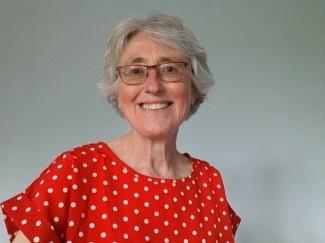 Welcome to the final post of the Summer Reads guest programme – if you missed it (or have already read all the books on the original selection – some people do!), Summer Reads Extras was released earlier this week with another five novels that really impressed me. There seem to be even more great books than usual this year and really enjoyed sharing my favourites with you.
Welcome to the final post of the Summer Reads guest programme – if you missed it (or have already read all the books on the original selection – some people do!), Summer Reads Extras was released earlier this week with another five novels that really impressed me. There seem to be even more great books than usual this year and really enjoyed sharing my favourites with you.
If you’re a regular visitor to my Sofa, you’ll know I’ll go for a novel with a dark side over one that doesn’t, or better still, one which fuses light and darkness. Anne Goodwin’s novel Matilda Windsor is Coming Home shows what’s possible with an apparently forbidding subject, and you can read my review following her Writers on Location on setting the novel in a psychiatric hospital:
Accustomed to camping since childhood, I wasn’t daunted when I discovered that the accommodation on an adventure holiday in Tanzania would be in tents. Yet I was unprepared for the first campsite. Packed in so tightly, I hardly slept. It felt like a dormitory with a sheet of tissue paper between the beds.
There was no more privacy when we camped in the wild. We could each have claimed a plot the size of a tennis court, yet we huddled together for safety. One night, we watched in shifts for marauding lions. By the end of that holiday, I knew more about my companions’ bowel habits than their personalities. Only when lodged in individual hotel rooms could we begin to be curious about each other and engage in ordinary chat.
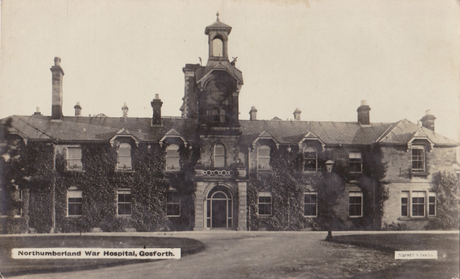
While hospital residents often appeared withdrawn, the staff tended to socialise with their colleagues. The county asylums, when built around a century earlier, were some distance from urban areas. So it helped with recruitment and retention to provide social facilities on site. I presume it also helped that many were related through birth or marriage.
As philosophies changed and closure plans developed, staff had few outlets to express their sense of loss except in opposing to community care. Perceiving myself as more enlightened, I barely registered that a housing estate had replaced their social club and a car park their cricket pitch.
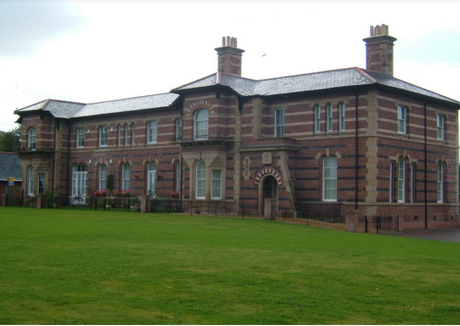
I returned to that territory for my third novel, Matilda Windsor Is Coming Home, two decades after most were demolished or converted into luxury flats. I’d read some excellent fiction about the old asylums, but none that accurately portrayed the transition to community care. I wanted my novel to capture not only the cruelty of forced segregation and the abuses that closed communities allow, but also the quirkiness, and the humanity of both staff and patients trapped therein.
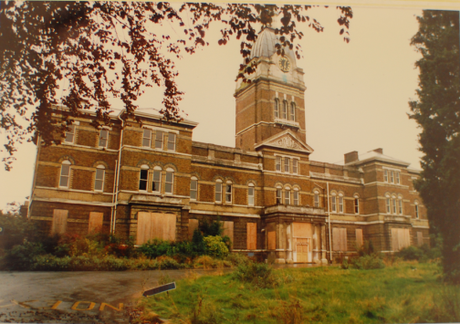
Leaving the car park, the clock tower confirmed she’d made it with five minutes to spare. Despite being home to several hundred people, and workplace for as many staff, there wasn’t another soul in sight. An aura of subterfuge enveloped Ghyllside – of deadness – as if behind the majestic facade lurked a yawning sinkhole, as if the roses in the turning circle were made of wax. Mounting the stone steps, Janice imagined mingling with the hapless new arrivals in the hospital’s heyday a century before. The ache of rejection. The fear of never seeing a friendly face again.
Here’s her perspective on the interior as she walks up the corridor that forms the building’s spine:
To the left, the doors to the continuing-care wards, rescued from anonymity by signboards strung from the ceiling; to the right, entrances to departments supporting, or parasitic upon, the business of warehousing society’s estranged. Farther along, Market Square, with the patients’ bank and small shop where they could spend their pittance, was a pauper’s theme park, tarted up like an olde worlde confectioner’s. Then the corridor leading to the boardroom and the main entrance, with the switchboard operator’s cubicle in the teak-panelled lobby and the staircase to the offices of those who came to work in suits. They passed the primped-up canteen where, on the other side of reinforced glass, domestics in mustard-coloured tunics ministered to an ashtray in the center of a table.
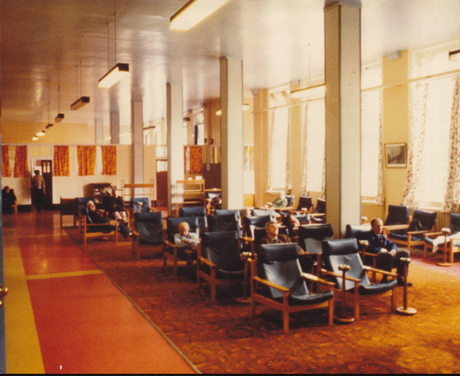
Matty, a long-term patient, perceives it differently. Ghyllside is her family’s country estate, the nurses her servants, her fellow patients are houseguests and the psychiatrists are journalists researching stories about a society heiress. After all she’s suffered through fifty years’ incarceration, and with her quirky charm, readers are loath to correct her.
All photographs taken from the county asylums website and used with permission. In order of appearance:
St Nicholas Hospital, Newcastle, where I used to work
Garlands, Cumbria – the closest long-stay hospital to where the novel is set
Banstead hospital, the first to close in the UK 1986
Residents’ lounge, Prestwich
Thanks to Anne for this fascinating glimpse of life behind the locked doors of a vanished world. As most posts in this series are geographical, it’s good to have a Writers on Location about a type of setting instead.

There is no shortage of novels and historical accounts of women locked up (and often treated as mentally unstable) for all kinds of non-conformity: social, religious, sexual, intellectual, political – I’ve featured a number of them here but this book is the only one set as recently as the late 20th century. Anne Goodwin’s professional experience has resulted in a different angle which I recall attracting considerable attention at the time.
The light wins in this novel, which manages to be warm, uplifting and surprisingly funny for all the sadness and injustice portrayed. Goodwin’s expertise comes through strongly in her ability to bring the reader onboard with Matilda’s altered perceptions – she’s a really endearing and memorable character. With three threads including that of the younger brother who has been missing her most of his life, this is certainly not a short novel but it’s one that rewards the reader’s investment on several levels.
*POSTSCRIPT*
I will now be vacating the Sofa until the second week of September to make a start on my next novel and possibly even making it to France on my fifth attempt to visit my almost-family and get some inspiration. I hope you’re managing to do something you enjoy – there’s always reading!

